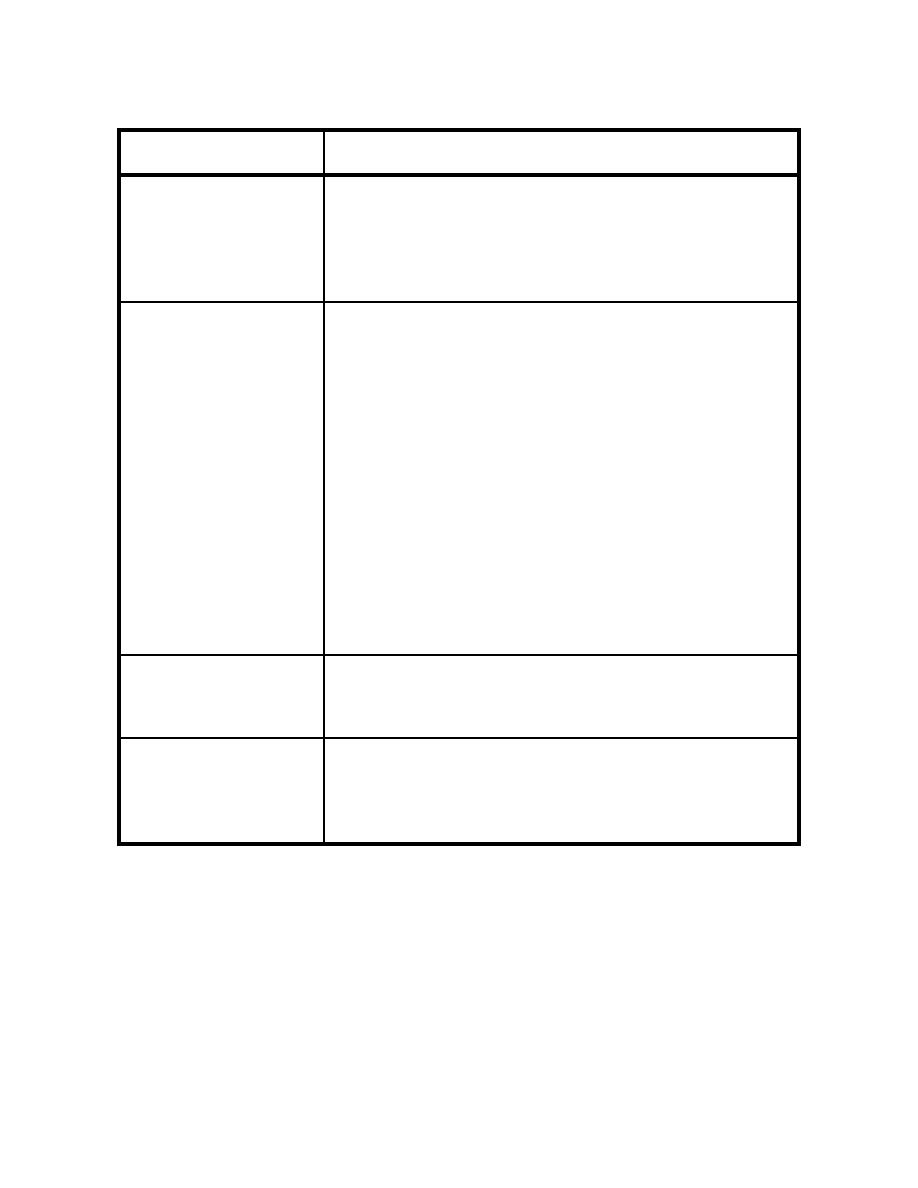
UFC 4-159-03
3 October 2005
Table 3-4. Mooring Service Types
MOORING SERVICE
DESCRIPTION
TYPE
TYPE I
This category covers moorings for mild weather
Mild Weather Mooring
(sustained winds of less than 35 knots; below gale force)
and currents less than 1 knot. Mooring situations include
ammunition facilities, fueling facilities, deperming
facilities, and ports of call. Use of these moorings is
normally selected in concert with forecasted weather.
This category covers moorings that are used through
TYPE II
storm conditions. Moorings include standard, storm and
nested configurations. Vessel will normally leave prior to
an approaching hurricane, typhoon, surge or other
extreme event. Naval ships intend to go to sea if 50 knot
winds are expected, but storms may come up quickly, so
higher design winds are recommended.
MST IIA covers mooring in winds of 50 knots or less in
TYPE IIA Standard
broadside currents of 1-1/2 knots or less. The practice is
Mooring
to provide for full pier operation for MST IIA.
MST IIB covers mooring in winds of 64 knot or less in
TYPE IIB Storm
broadside currents of a 2 knots or less. This is the
Mooring
intended Navy ship mooring design requirement. It is
encouraged for general home porting because sudden
storms can produce high winds on short notice. Pier
operations may be impacted for MST IIB if lines must be
run across a pier.
This category covers moorings of vessels that cannot or
TYPE III
may not get underway prior to an approaching hurricane
Heavy Weather
or typhoon. Moorings include fitting-out, repair,
Mooring
drydocking, and overhaul berthing facilities.
TYPE IV
This category covers moorings that are used to
Permanent Mooring
permanently moor a vessel that will not leave in case of a
hurricane, typhoon, or surge. Moorings include inactive
ships, floating drydocks, ship museums, training berthing
facilities, etc.
3-2.2
Facility Design Criteria for Mooring Service Types. Mooring facilities
are designed conforming to the site specific environmental criteria given in Table 3-5.
Table 3-5 gives design criteria in terms of environmental design return intervals, R, and
in terms of probability of exceedence, P, for 1 year of service life, N=1. The ship usually
has the responsibility for providing mooring lines for Mooring Service Types I and II,
while the facility usually provides mooring lines for Mooring Service Types III and IV.
3-2.3
Ship Hardware Design Criteria for Mooring Service Types. Ship
mooring hardware needs to be designed to accommodate various modes of ship
operation. During Type II operation, a ship may be moored in relatively high broadside
21



 Previous Page
Previous Page
